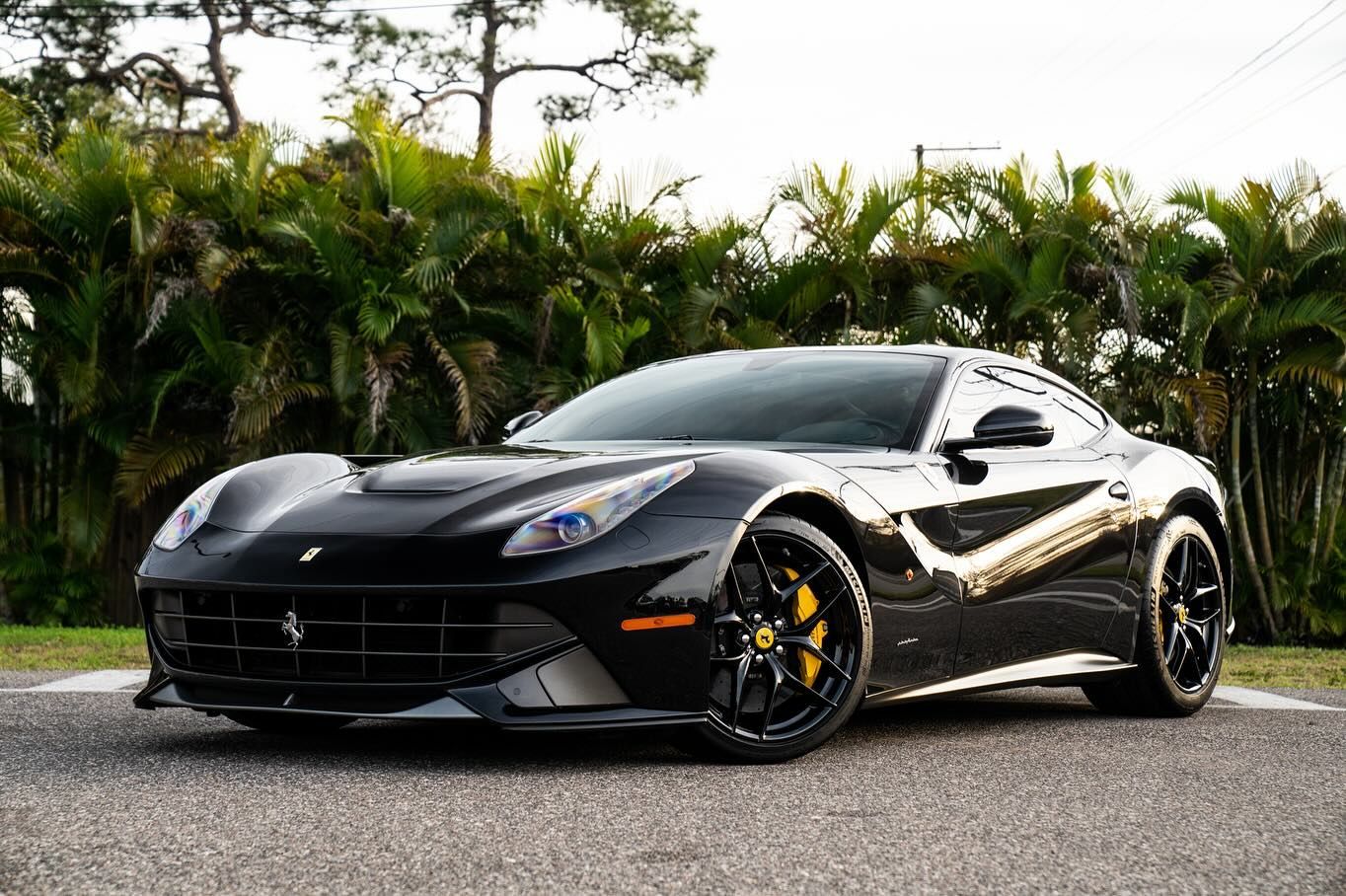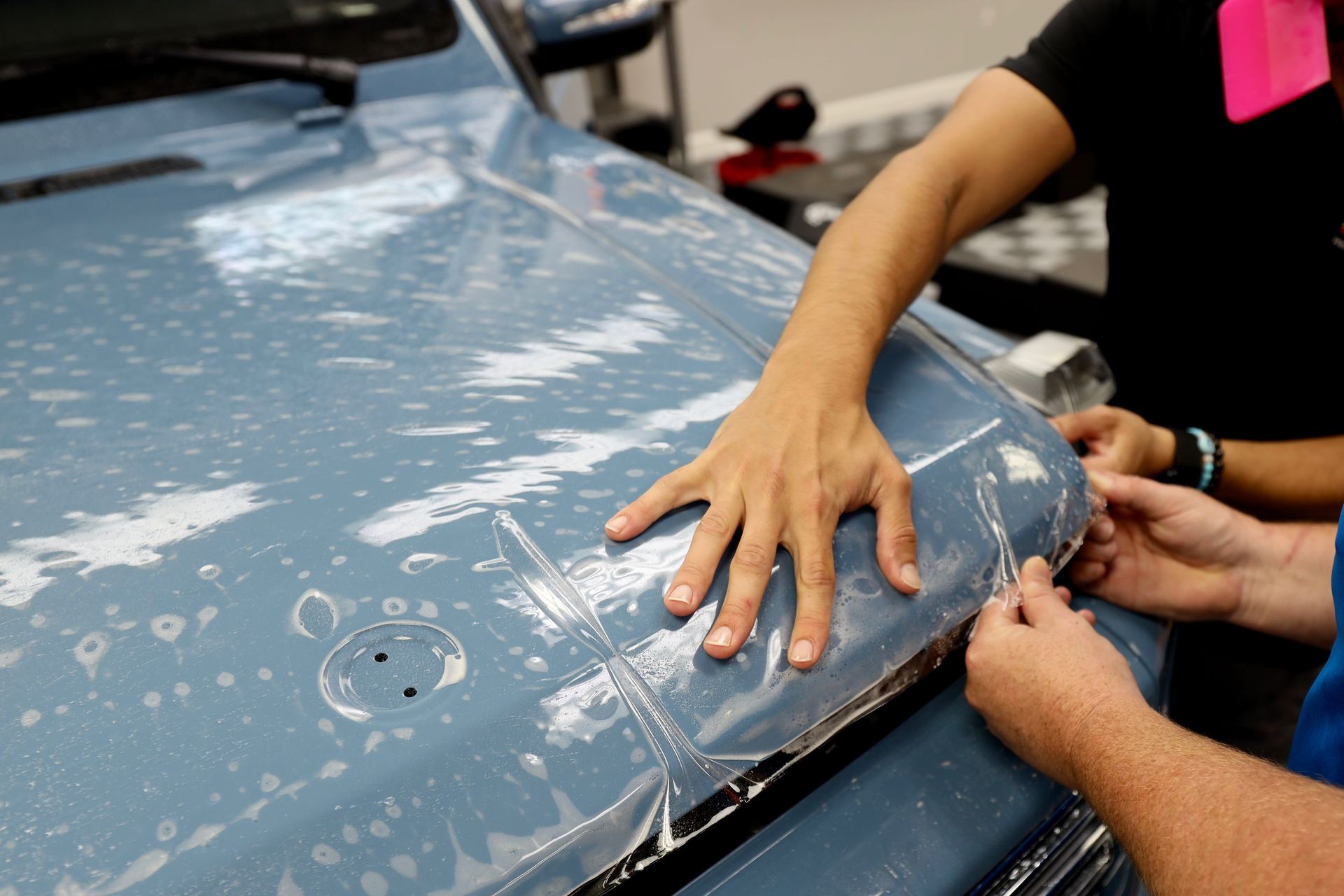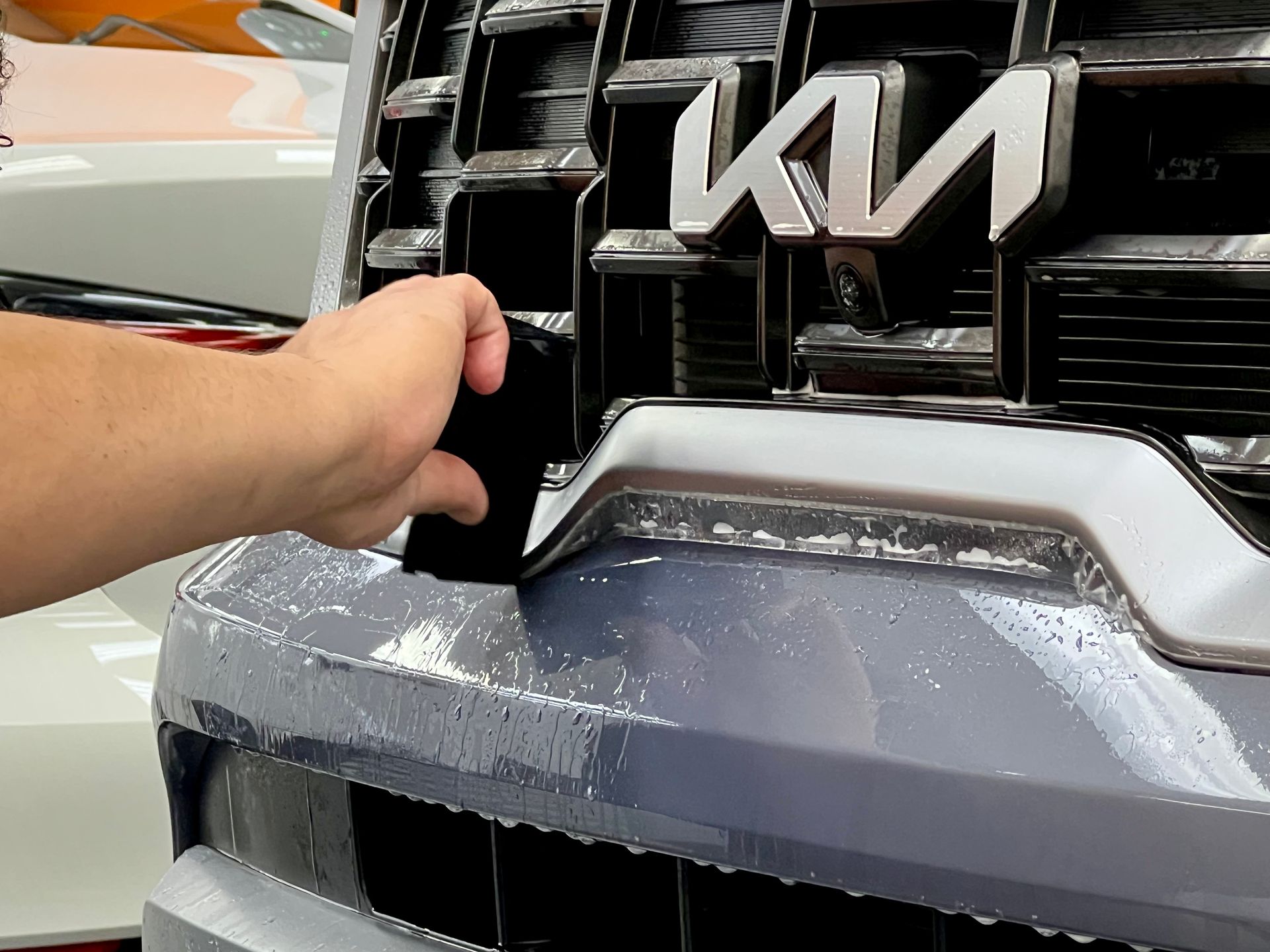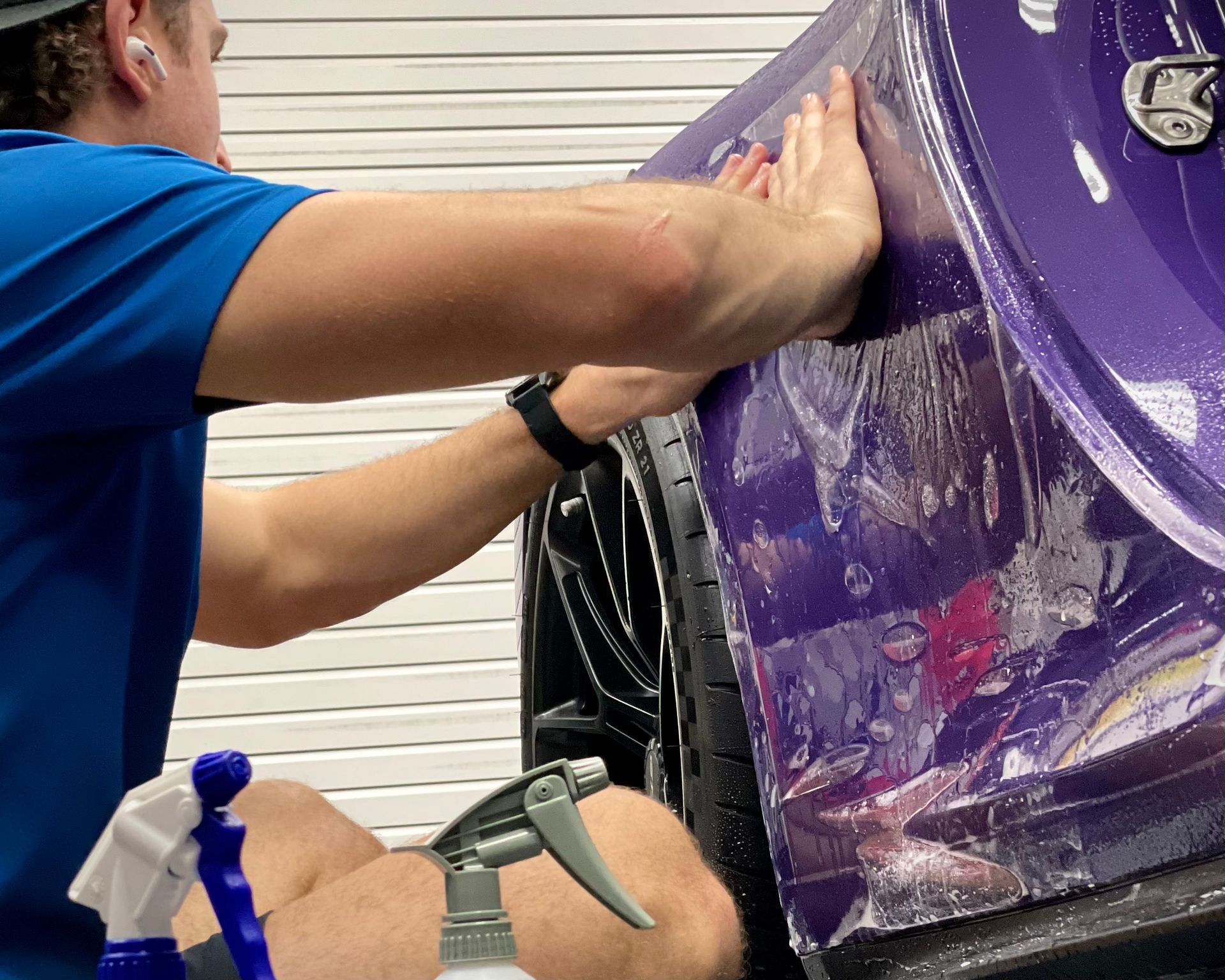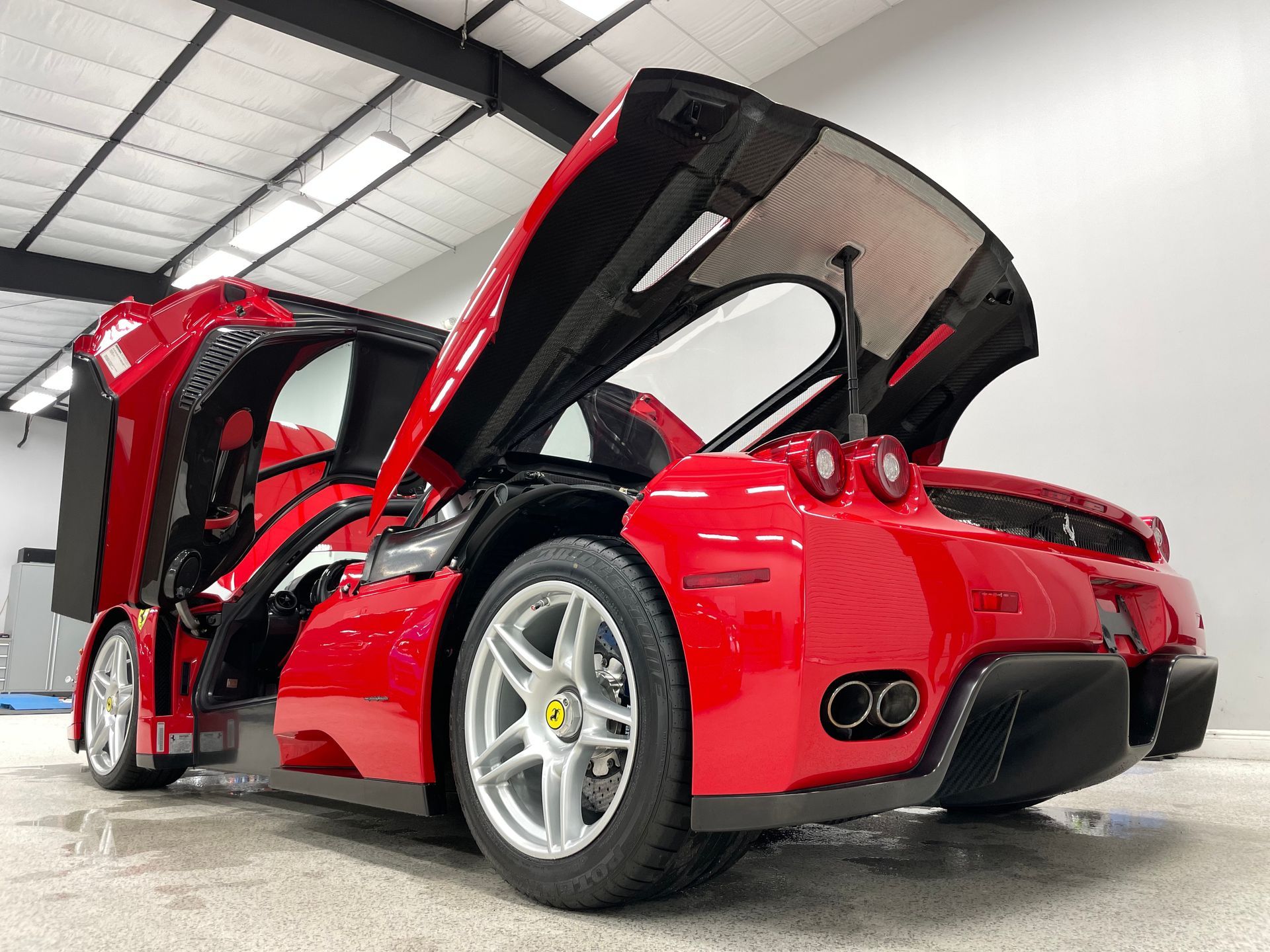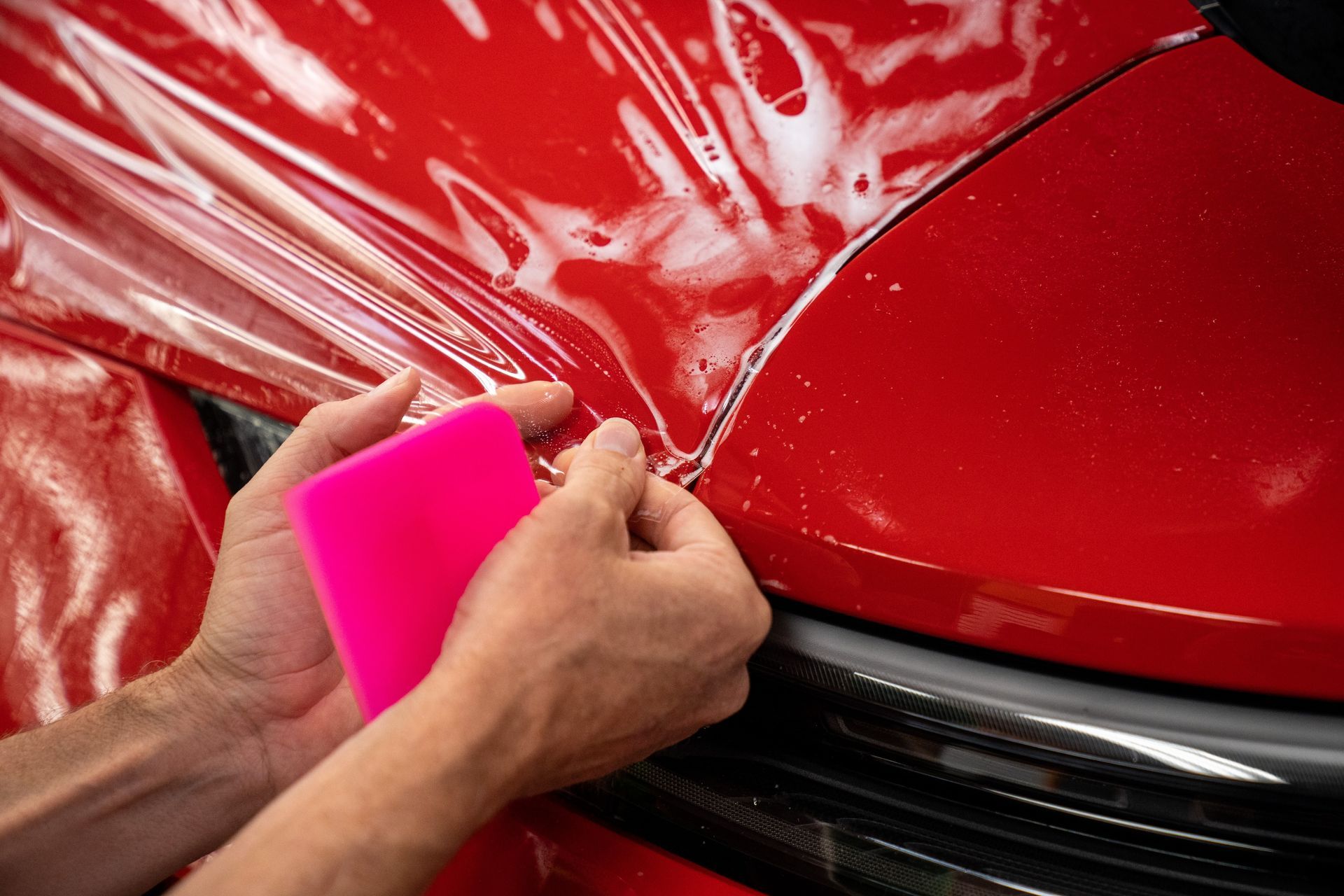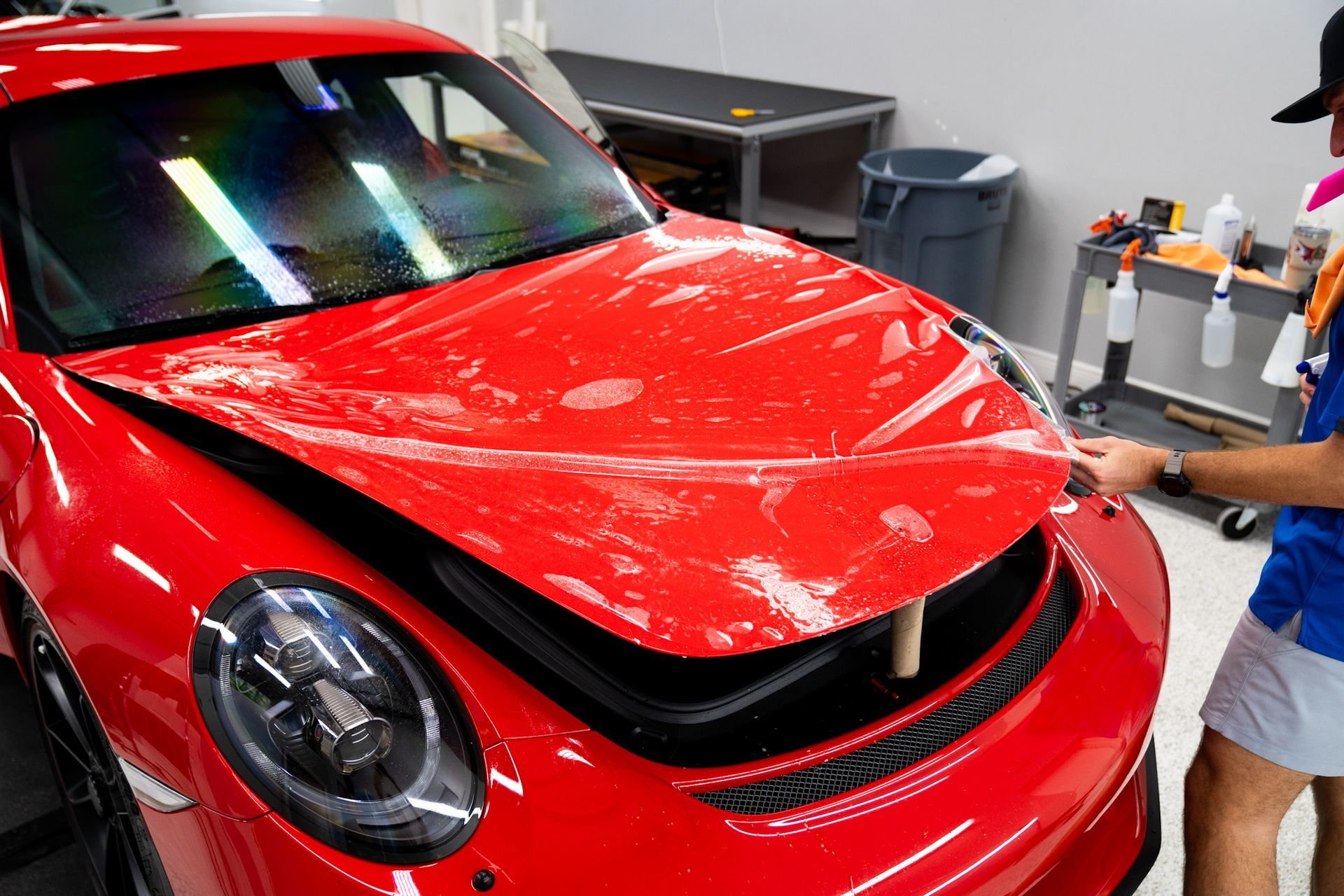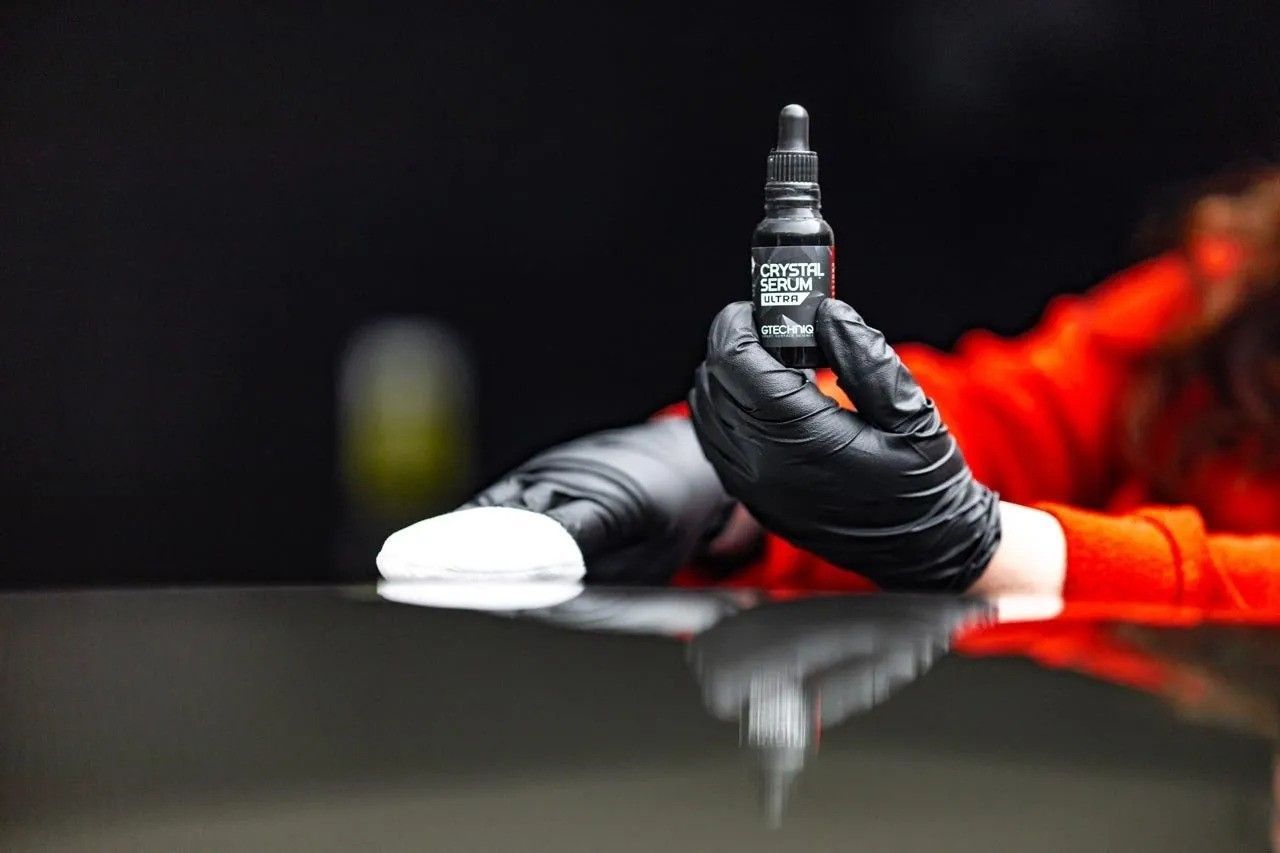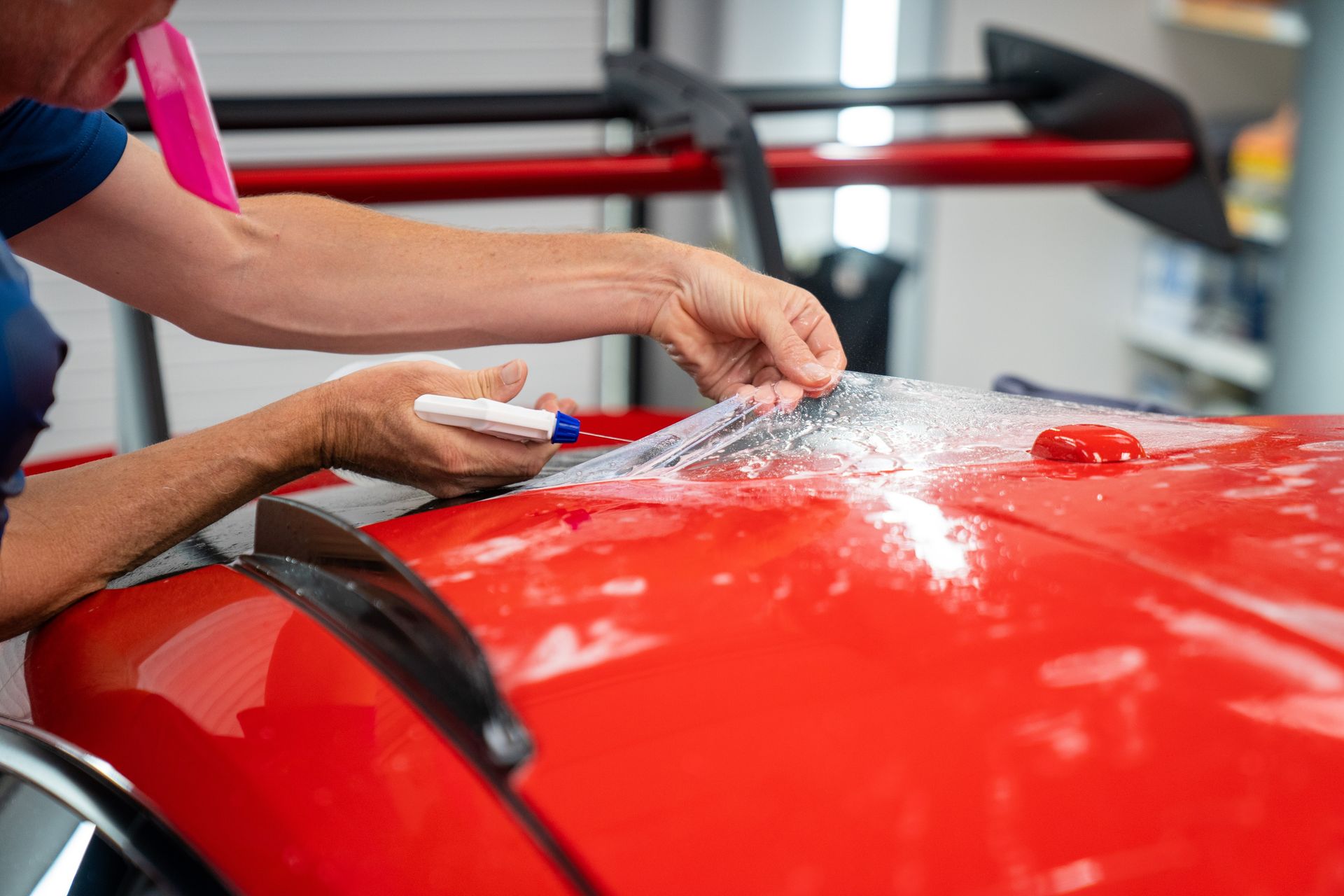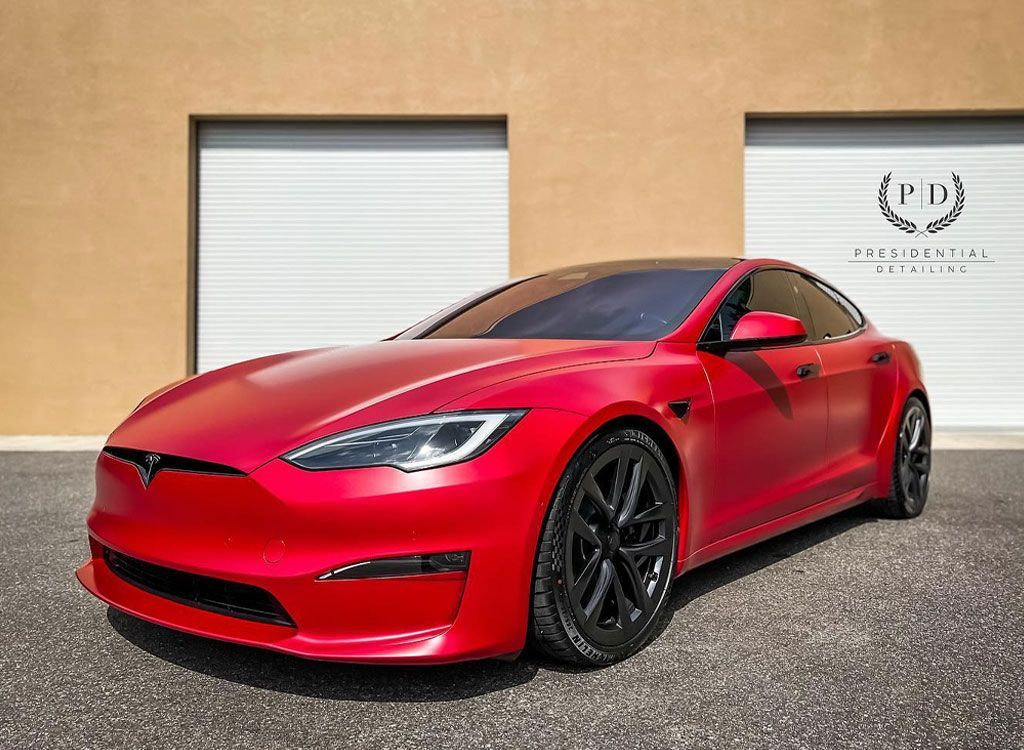The Impact of Professional PPF on Your Car: Protection and Aesthetics Explained
CALL (813) 723-9679
GET A FREE ESTIMATEFor any car enthusiast, seeing the first scratch or chip on your vehicle can feel like heartbreak. It's a common fear that owners share, knowing just a single blemish can reduce both the beauty and value of their prized possession. Thankfully, paint protection film offers more than just peace of mind; it provides a comprehensive shield against everyday hazards like gravel, road debris, and accidental brushes.
Professional paint protection film significantly enhances your car's exterior by protecting it from scratches, chips, and environmental damage while preserving its aesthetic appeal. Additionally, vehicles with a paint protection film can retain up to 15% more resale value compared to those without it, making it a worthwhile investment for maintaining both the look and financial value of your car over time.
Benefits of Professional PPF
One of the most compelling benefits of paint protection film is its ability to safeguard your car's paint from potential damage. Made from thermoplastic urethane, this durable film creates an invisible barrier that deflects scratches, chips, and even UV rays. This not only preserves the integrity of your vehicle's exterior but also enhances its overall longevity. Imagine driving down a gravel road or parking in tight spaces—each scenario poses a risk to your paint job. By choosing PPF, you're actively preventing those unsightly blemishes before they have a chance to occur.
Beyond protection, one of the more subtle yet impactful advantages of paint protection film lies in its enhancement of resale value. Vehicles equipped with a paint protection film can indeed retain up to 15% more resale value compared to those without it. This factor is especially crucial for anyone who sees their car as a significant investment. For example, consider a vehicle originally purchased for $30,000. With a paint protection film, it might resell for approximately $25,500, but without it, that value can diminish to just $22,500. Buyers today gravitate towards well-maintained vehicles that look new and show minimal signs of wear—and a layer of paint protection film can play a pivotal role in achieving that perception.
Nevertheless, while the initial installation cost may seem steep, think about the long-term savings. Initially, the pricing for professional installation of a paint protection film can range significantly, generally falling between $1,500 and $5,000, depending on the make and model of the vehicle and coverage area. However, that initial outlay should be viewed as an investment rather than an expense. The avoidance of costly repainting jobs due to scratches or chips translates to substantial savings down the line. Plus, when you consider the ongoing aesthetic appeal and increased resale potential—which often outstrips the cost—you start to see why early application is highly recommended for those particularly invested in keeping their cars looking pristine.
Taking these factors into account highlights why applying professional paint protection film soon after acquiring a new vehicle maximizes benefits significantly. The decision to install a paint protection film should reflect an understanding that protecting your investment ensures immediate visual appeal while fortifying it against future wear and tear. Choosing professional-grade film results in unparalleled defense against environmental contaminants while enhancing your vehicle's aesthetic charm—a win-win situation for any car enthusiast or everyday driver alike.
Installation and Finding an Installer
The installation of a paint protection film requires a professional touch—not just anyone can apply it to ensure that both the appearance and protective qualities are maintained effectively. A subpar installation might lead to bubbling, peeling, or even premature wear on your vehicle's finish. Therefore, taking the time to find a reputable installer pays off in the long run.
- Research Potential Installers: Start by exploring local detailing shops or professional paint protection film installers in your vicinity. Online reviews are essential; they provide insight into the experiences of others before you. Look for those with high ratings on platforms such as Google or Yelp, but also consider checking specific automotive forums where enthusiasts share their experiences. This research forms the foundation for making an informed choice, ensuring you select someone who values quality as much as you do.
- Check Qualifications: Moving on, it's vital to verify that your chosen installer has the necessary certifications and training in paint protection film installation. Many reputable installers undergo specialized training programs, often offered by film manufacturers. This training ensures they are well-versed in the latest techniques and best practices for applying paint protection films. Additionally, inquire about their experience in the industry. A seasoned installer will have a portfolio showcasing their past work, which can provide insight into their skill level and craftsmanship.
- Request Quotes: After narrowing down your options, contact a few installers to request quotes. This process serves two purposes: it allows you to compare prices and helps you discover any additional services they might offer—such as complimentary maintenance checks or warranties on their work. Don't hesitate to ask questions about their approach and processes; understanding what you're paying for will empower you in your final decision-making.
Once you've secured an installer who meets these standards and completed the installation successfully, understanding how paint protection film protects your vehicle is essential for appreciating its true value.
Protective Features
A paint protection film serves as a formidable barrier designed to shield your car's exterior from an array of hazards. Engineered from thermoplastic urethane, this remarkable material boasts impressive flexibility, allowing it to absorb impacts without sacrificing durability. For instance, when gravel or road debris strikes the surface, the paint protection film flexes and distributes the force, significantly reducing the risk of chips and scratches on the underlying paint.
One of the standout features of a high-quality paint protection film is its self-healing properties. Minor abrasions and scratches can literally disappear when exposed to heat or sunlight. Imagine a warm day thawing out those little blemishes, leaving your car looking nearly pristine again. This characteristic is especially beneficial for vehicles located in areas with intense sun exposure, where the risk of thermal reaction helps your paint protection film do its job efficiently.
Additionally, PPF provides excellent resistance against ultraviolet (UV) rays, blocking up to 99% of harmful radiation. Without this protection, UV rays can lead to paint fading and oxidation over time, diminishing your vehicle's aesthetic appeal and resale value. By adding a layer of paint protection film, you not only keep your car looking new but also help maintain its overall integrity and luster for years to come.
Beyond protecting against physical damage from road debris and UV rays, a paint protection film also acts as a shield against chemical agents like bird droppings and tree sap. These unwelcome substances can etch into the vehicle's paintwork if left untreated. With a sturdy layer of paint protection film in place, cleanup becomes easier than ever as these contaminants are less likely to bond with your vehicle's finish.
Recognizing how protective features work highlights their significance for not just safeguarding your car’s exterior but also maintaining aesthetics over time.
Aesthetic Enhancements
Beyond the practical benefits of safeguarding your vehicle, PPF is a game-changer when it comes to enhancing the overall appearance of your car. When you apply a layer of paint protection film, you’re not just protecting the paint; you’re significantly improving its aesthetic appeal, ensuring that your vehicle looks as stunning as the day it rolled off the showroom floor.
- Maintains Shine: One of the standout features of a paint protection film is its ability to preserve the shine of your vehicle. The film acts as an invisible shield against harmful UV rays that can cause fading and dulling over time. By safeguarding your paint, a PPF ensures that vibrant colors remain bright and alluring for years to come. Imagine cruising down the street in a car that sparkles under the sunlight, catching the eyes of pedestrians and fellow drivers alike. Regular maintenance may still be required, but a paint protection film significantly reduces the frequency with which it's needed, allowing you to enjoy that pristine appearance longer.
- Prevents Contaminants: Another vital benefit is how effectively paint protection film prevents contaminants from adhering to your car’s surface. Things like bird droppings, tree sap, and road tar can wreak havoc on a vehicle's finish if not addressed quickly. With a paint protection film in place, these substances simply slide off rather than causing stains or damage. Not only does paint protection film protect against damaging elements, but it also enhances your car’s look and keeps it looking new longer—transforming daily driving into an experience filled with pride rather than worry.
Cost Considerations
When you think about the cost of a paint protection film, it’s essential to remember that it’s not just an expense—it's a long-term investment in your vehicle's appearance and value. The overall cost can fluctuate based on various factors, but taking a closer look can help clarify exactly what influences these numbers.
Different vehicle types bear varying price tags when it comes to paint protection film installations. A sedan typically requires a smaller investment compared to an SUV or high-end luxury car, simply because of size and the amount of material needed. On average, the cost for a full car paint protection film installation hovers around $2,500. While this may appear daunting at first glance, consider it alongside potential savings in paint repairs and enhanced resale value. If keeping your car in pristine condition can translate into thousands more during resale, suddenly the initial investment seems less intimidating.
Additionally, many PPF installation professionals provide warranties lasting between 5 and 10 years. This factor further solidifies paint protection film as a value-driven choice because you're not just buying a product; you're securing peace of mind over a significant span of time. It is also pivotal to weigh factors like material quality and installation complexity. Higher-end paint protection films often come with enhanced properties such as self-healing capabilities and better UV resistance, leading to longer durability but also a higher price tag. Similarly, an intricate installation involving multiple layers or detailing work on contours and edges will necessitate skilled labor, which can influence costs.
Longevity and Maintenance
Regular maintenance of your paint protection film not only maximizes its lifespan but also keeps your car looking pristine. Think of it as a commitment to the care of your vehicle; just like how we routinely check our health or service our appliances, a little upkeep goes a long way. The success of protecting your investment lies in simple practices that can easily be integrated into your vehicle's care routine.
Regular Cleaning
To maintain the finish and protective qualities of the paint protection film, washing your car regularly is crucial. Using pH-neutral soaps ensures that you won’t strip away any hydrophobic elements embedded in the film. Imagine stepping onto a sandy beach; no one enjoys having sand stuck to their skin. Similarly, when dirt and grime cling to the surface of your car, it detracts from its overall shine. Therefore, consider this: if you treat your vehicle with the same respect you’d give to a fine piece of art, you’ll see better results. To make things easier, keep in mind to avoid abrasive cleaning tools. A soft microfiber cloth or sponge will do wonders without risking scratches on the film. Picture using a gentle caress rather than a harsh scrub; that’s how you want to treat your paint protection film.
Annual Inspection
Annually having the paint protection film checked by a professional is another critical step. Experts can identify any potential issues before they escalate into serious problems—think of them as a yearly health check-up for your car. They will look for common concerns like lifting edges or stubborn stains that might develop over time due to environmental factors or wear and tear. Besides visual inspections, professionals possess the expertise to assess whether the hydrophobic properties are functioning properly. Indeed, this precaution can save you from unexpected repairs further down the line.
With these simple yet effective maintenance tips, you'll not only extend the life of your paint protection film but also retain the dazzling appearance of your cherished vehicle. Incorporating these strategies will ensure that both protection and aesthetics are upheld, allowing your car to stand out on the road for years to come.
Trusted Paint Protection Film Services in Clearwater, FL
Protect your vehicle with the trusted paint protection film services offered by Presidential Automotive Detailing in
Clearwater, FL. Our high-quality PPF is designed to shield your car’s paint from chips, scratches, and other damage, ensuring a flawless finish that lasts. With professional installation and unmatched attention to detail, we offer the ultimate safeguard for your car’s appearance. Invest in the protection your vehicle deserves and enjoy peace of mind on the road. Contact us today to schedule your appointment, or call us at (813) 723-9679 to get started!

